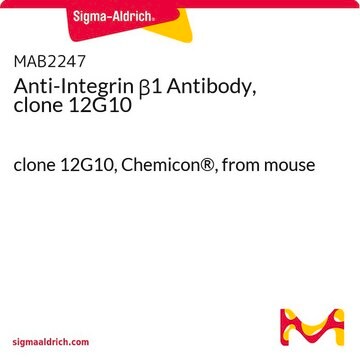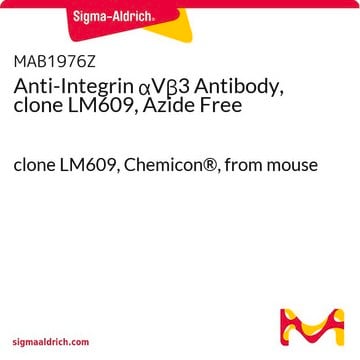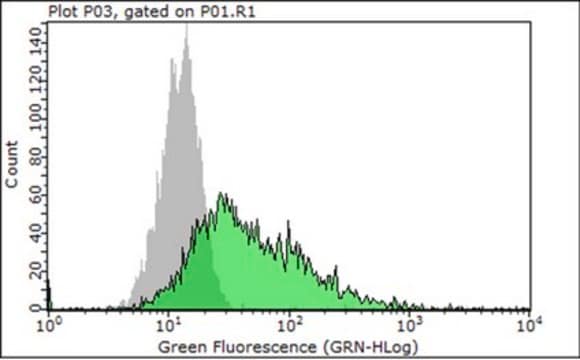MABT821
Anti-Integrin beta1 (CD29) Antibody, clone mAb13
clone mAb13, from rat
Synonym(s):
Fibronectin receptor subunit beta, Glycoprotein IIa, GPIIA, VLA-4 subunit beta, CD29
About This Item
Recommended Products
biological source
rat
Quality Level
antibody form
purified immunoglobulin
antibody product type
primary antibodies
clone
mAb13, monoclonal
species reactivity
human
packaging
antibody small pack of 25 μL
technique(s)
immunohistochemistry: suitable
immunoprecipitation (IP): suitable
inhibition assay: suitable
isotype
IgG2aκ
NCBI accession no.
UniProt accession no.
shipped in
ambient
target post-translational modification
unmodified
Gene Information
human ... ITGB1(3688)
General description
Specificity
Immunogen
Application
Immunocytochemistry Analysis: A representative lot detected Integrin beta1 (CD29) in Immunocytochemistry applications (Akiyama, S.K., et. al. (1989). J Cell Biol. 109(2):863-75; Humphries, J.D., et. al. (2005). J Biol Chem. 280(11):10234-43).
Immunoprecipitation Analysis: A representative lot detected Integrin beta1 (CD29) in Immunoprecipitation applications (Akiyama, S.K., et. al. (1989). J Cell Biol. 109(2):863-75).
Inhibition Analysis: A representative lot blocked HT-1080 cells adhesion to fibronectin coated plates (Courtesy of Dr. Kenneth M. Yamada, M.D., Ph.D., NIDCR, National Institutes of Health, Bethesda, MD USA).
Cell Structure
Quality
Immunocytochemistry Analysis: A 1:500 dilution of this antibody detected Integrin beta1 (CD29) in A431 cells.
Target description
Physical form
Storage and Stability
Other Notes
Disclaimer
Not finding the right product?
Try our Product Selector Tool.
Storage Class Code
12 - Non Combustible Liquids
WGK
WGK 2
Flash Point(F)
does not flash
Flash Point(C)
does not flash
Certificates of Analysis (COA)
Search for Certificates of Analysis (COA) by entering the products Lot/Batch Number. Lot and Batch Numbers can be found on a product’s label following the words ‘Lot’ or ‘Batch’.
Already Own This Product?
Find documentation for the products that you have recently purchased in the Document Library.
Our team of scientists has experience in all areas of research including Life Science, Material Science, Chemical Synthesis, Chromatography, Analytical and many others.
Contact Technical Service








